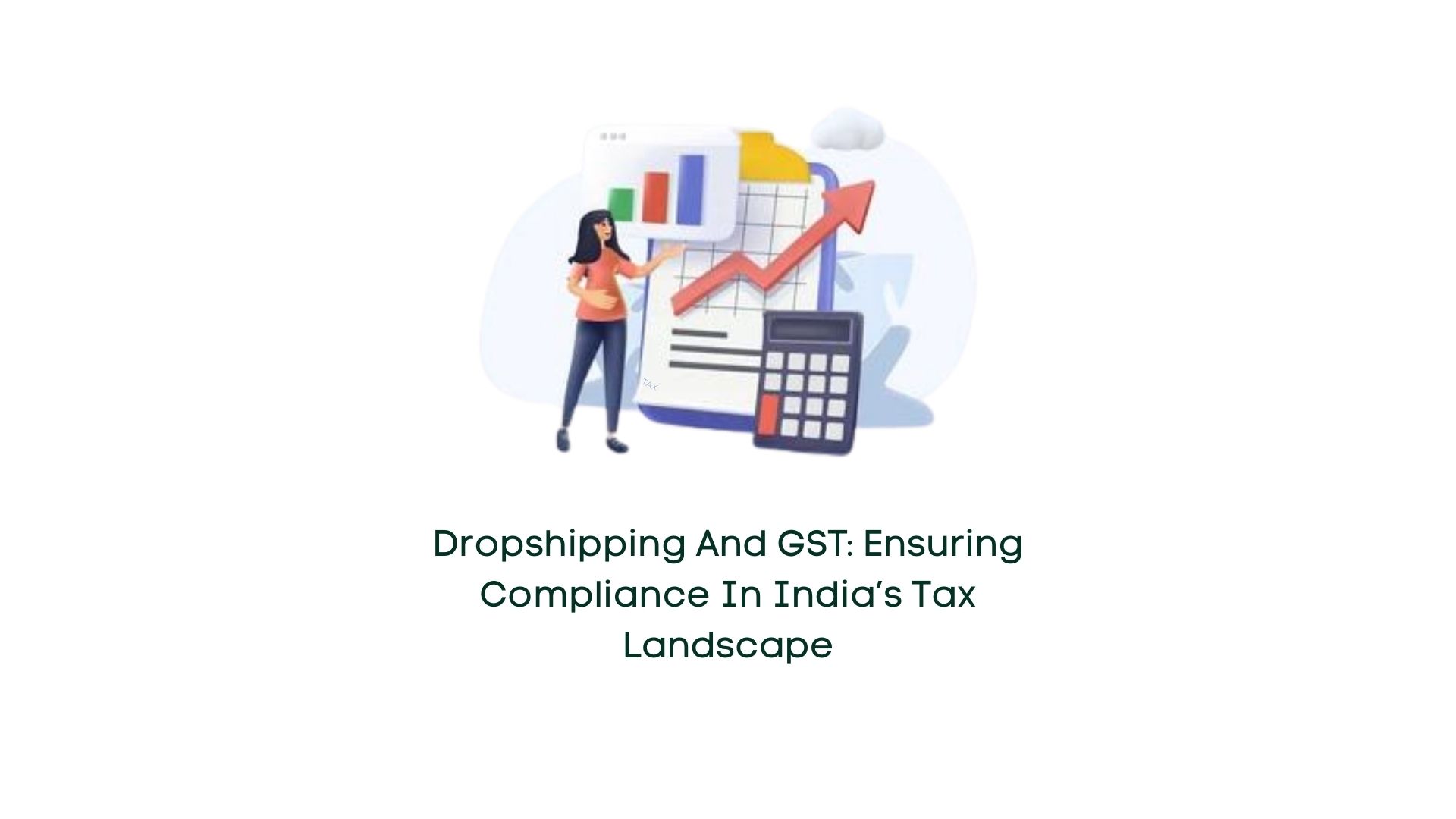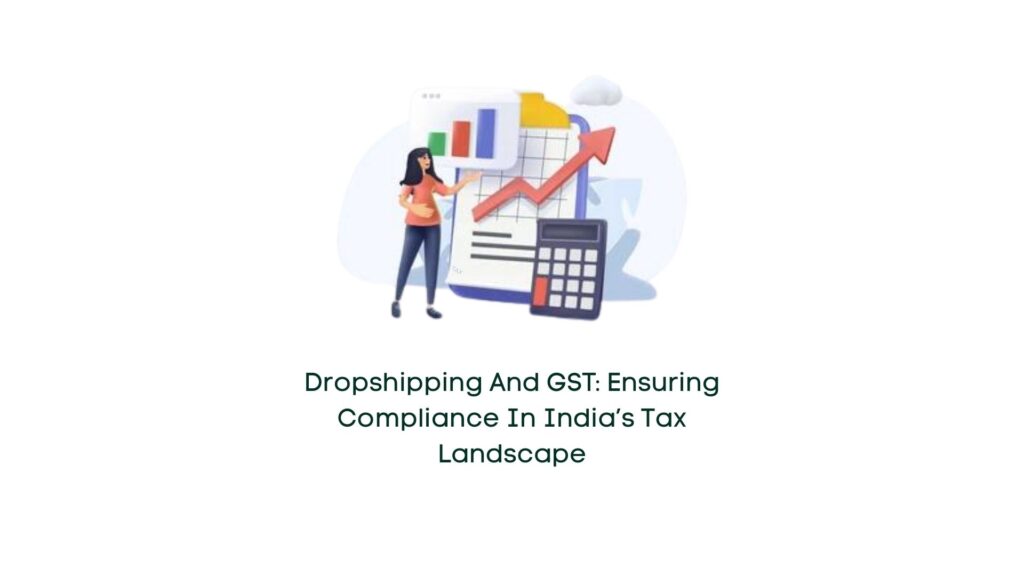
29 Feb Dropshipping and GST: Ensuring Compliance in India’s Tax Landscape

In this detailed blog, the complexities surrounding dropshipping businesses in India and their compliance with Goods and Services Tax (GST) regulations will be explored. The rise of dropshipping is notable for its inventory-free model, which eliminates substantial investments and mitigates the risk of dead stock.
Defining Dropshipping Business:
Dropshipping entails selling products without physical ownership. Sellers take orders from customers and forward them to third-party suppliers or manufacturers for fulfillment. Sellers issue invoices to customers in their name, while suppliers invoice sellers directly for the ordered items.
Legal Compliance in Dropshipping:
Establishing a business entity (proprietary/partnership/company). Contractual agreements with suppliers/manufacturers. Adherence to GST and customs regulations.
Focus on GST Implications:
This article delves into the GST implications specifically, highlighting its advantages and application in dropshipping businesses.
Advantages of GST for Dropshipping Businesses:
- Elimination of cascading tax effects.
- Higher registration threshold.
- Simplified online procedures.
- Reduced compliance burden.
- Defined treatment for e-commerce transactions.
- Improved logistics efficiency.
- Regulation of unauthorized sectors.
- Technologically driven processes.
Documents Required for GST Registration in Dropshipping:
- Applicant's PAN.
- Aadhaar Card.
- Owner's photograph and authorized signature.
- Business address proof.
- Bank account details or canceled cheque.
- Partnership deed/incorporation certificate.
Applicability of GST in Dropshipping:
- Domestic transactions: Sellers and suppliers must register under GST if turnover exceeds the threshold limit or extends beyond state or union territory borders.
- Exports: Sellers can choose between obtaining a Letter of Undertaking for GST exemption or paying IGST and claiming a refund.
- Imports: Sellers are liable to pay IGST on a reverse charge basis for goods purchased from outside India, with the option to claim Input Tax Credit.
- Transactions outside India: Depending on the nature of the transaction, GST may not be applicable. Export of services qualifies for GST exemption, although registration might be necessary for other benefits.
Filing GST Returns for Dropshipping:
- Monthly GSTR-1 filing by the 11th of the subsequent month.
- Monthly GSTR-3B filing by the 20th of the subsequent month, incorporating sales and input tax credits.
Consultation and Conclusion:
Navigating the complexities of GST in dropshipping requires meticulous attention to detail. Seeking expert guidance, such as from CAGMC, can ensure compliance, optimize financial management, and minimize tax liabilities, fostering global business growth and profitability.


No Comments